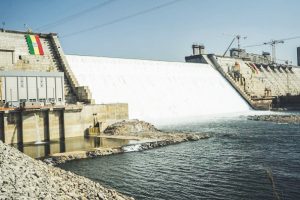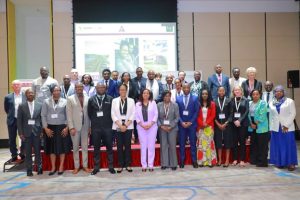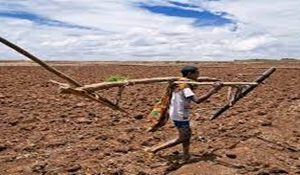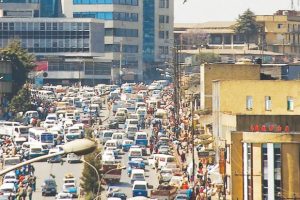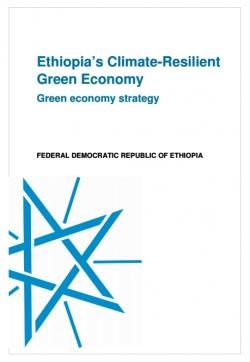
Ethiopia launched Climate Resilient Green Economy (CRGE) in 2011, and since then it has been implementing such an awarding initiative. Among the various mechanisms deployed to promote CRGE are tree planting, waste management, water shade management, and economical usage of natural resources, introducing and advancing utilization of renewable energy through the exploitation of solar, wind, hydropower and geothermal energies.
So far achievements are registered. However, cutting trees for various purposes such as for construction work, household fuel and expansion of agriculture land still compromise the effort to realize the expanding of forest coverage lands.
Ethiopia had developed the culture of tree planting for long, and modern history tells that the formal tree planting was introduced by Emperor Menelik by importing eucalyptus tree from Australia and planted it at the vicinity of the capital.
The successor of Menelik, Emperor Haile Selassie also sustained tree planting all over the country. This time the plantation endeavor was supported by the foreign consultants particularly from Sweden. Pertinent institutions helpful to meet the objectives were established with supporting laws. In such a way, achievement was registered and many areas of degraded lands had been recovered.
Following the Imperial regime, land management work and tree planting was a common agenda by the government and enabled the nation to protect soil from erosion, recovering barren lands, retaining underground water and halting desertification were realized.
Tree planting can bring various benefits to nature and to human beings at large particularly, it is important to Ethiopia whose economy has been depended on agriculture, as the mainstay. Protecting soil from erosion, percolating underground water, reducing land degradation, keeping wild life from migration, balancing the ecosystem, protecting water points from drying up, keeping soil fertility and sequestration of carbon can be realized in this regard.
The launching of Green legacy initiative, five years ago by Prime Minister Abiy Ahmed, has further strengthened the nation’s aspiration to build climate resilient green economy.
As to reports released from government sources through green legacy program, billions of tree seedlings are planted annually. The program enabled to create a number of job opportunities. Here, close to 700 thousand people, who have been engaging in cultivating seedlings, have secured jobs. In addition, the initiative created job and provided thousands of service providing institutions with transport sector.
Some public and private institutions create permanent job for guards to keep the planted trees from damage. Urban agriculture has also boosted. Unlike the previous tree-planting scheme, the green legacy tree planting initiative introduced agro-forestry. Side by side with planting trees, fruits such as avocado, papaya, mango and others are planted and in such manner, it was possible to enhance farmer’s income and supply excess fruits to urban markets.
According to the Ministry of Agriculture, since the implementation of the green legacy, degraded lands have been recovered and barren lands are also being changed in to forests in various parts of the country. It is also proved that the amount of soil erosion is reduced. The culture of cultivating green areas in the urban centers also promoted and the areas are beautified. The other value of tree planting and forest development is that it has a capacity to sequestrate carbon which has not only local but also global value.
The industrialized countries still use carbon based energy for their industrial production and the emission gas released from the industries aggravates global warming and climate change which critically affects the poor countries agriculture, water and health sectors. Therefore, through increasing forestland areas Ethiopia can enhance its negotiation power in climate bids globally. Because the forest in Ethiopia sequestrates carbon posed by some other industrial countries, it has now been given due emphasis. On the other hand, it can also generate hard currency through carbon trading.
Still the tree planting efforts have faced various challenges due to low level of public awareness and reckless move against natural resources like trees.
According to Environment Forest and Climate Change Commission, annually about 1200 hectares of lands will be changed in to barren lands due to numerous factors. It is that understood in Ethiopia that 85 percent of the population resides in the rural part of the country and cutting trees and removing the vegetation cover for various purposes becomes a common practicing. The major one is utilizing tree for household fuel. In rural part, as the population has no access to modern energy utilizing, using bio mass energy is century’s old practice there.
There are also numerous people engaged in charcoal making through cutting trees and according to studies more than 160 vehicles of charcoal arrive at the capital on a daily bases.
Not only does the utilization of fuel wood for household energy pose deforestation and land degradation in the nation but it also brings health risk on children and mothers.
The Ministry of Health recently announced that in rural part the respiratory disease is the major case for child mortality. The uneconomically usage of fuel wood by traditional stove also increases the rate of fuel wood cutting and to reverse the situation, providing modern stove by none governmental organization has been taken as a way out and still continued.
As it is understood, Ethiopia’s population growth is registered as one of the highest in the world which is 3 percent per annum. In the rural parts, on average a family has 7 members and most of the farmer’s farm size is less than one hectare and when their children reach to above the age of 18 either provide portion of the farm land to them or forced to aggrandize forest lands and such practice poses the dwindling of forest lands.
Hence, shifting the stranded rural labor force to the non- farming sector and reforming the land holding system should be taken as a way out and in such manner meeting the tree planting objective and developing climate resilient economy will be realized.
Obviously, Ethiopia is still categorized as food aid recipient country because of insufficient agricultural production and productivity. Having the sector vulnerable to extreme climate condition further hampers the nation struggle to ensure food security. The centuries old farming techniques and tools are not helpful to protect soil from erosion and land degradation. Therefore, introducing better farming methods should be taken as a way out.
One of the method employed for developing Climate Resilient Green Economy is shifting from the usage of carbon based, including bio mass energy in to renewable energy one. In this regard Ethiopia has abundant and untapped renewable energy sources which mentioned above.
Currently the hydropower serves as the major renewable energy sources and so far in the last two decades and a half the successive governments devoted their budget, human resources and time for the construction of Hydropower dams and increased the number of dams from time to time. The Gilgel Gibe one, two and three, the Tekeze, the Tanabelese, the Genale, Gilgel gibe four and the Hidase dams both are under construction can be mentioned in this regard.
Construction of Hydro Power dams is not an end by itself rather sustaining them as per their life span is essential. The dams should be maintained from silt and sedimentation and to realize it, the ongoing tree planting and water shade management should be continued. The absence or dwindling of forests in the high land parts where rainfall is started posed erosion in which the soil taken away by flood finds its way to hydropower dam cases silt and sedimentation and ultimately shorten the life span of the dam.
The sedimentation also reduces the power generation capacity of dams which again poses power interruption makes the manufacturing industries to produce below their producing capacity that intern affects the economy.
As Ethiopia is located in tropical Africa nearer to the equator has great potential to harness the radiant energy and to date some off grid projects used solar power for lightning in the rural parts and many households has been free from wood and kerosene smokes. If it is developed, it can support the manufacturing through supplying energy. The wind farms installed near Adama, Mekele and Arsi generate power and supply it to the main grid.
The Aluto Langano geothermal project supported by foreign investment is eying its completion and when it begin power generating more modern energy will be supplied to the market. The geothermal potential in the rift valley area of Afar region has immense potential to generate power and if it is exploited it can change the energy landscape of the country.
But it needs more investment and technology and well trained human power. Currently Ethiopia is heavily dependent on imported petrochemical based energy which has a hazardous effect on the environment. According to the Ministry of Mining and Energy, Ethiopia spends 4 billion Dollars for the importation of the petroleum energy.
It is used mainly for vehicle transportation and power generation in the rural part of the country.
For the poor country such as Ethiopia, it is expensive hence, for long the government regarded substituting the petrochemical energy sources by the renewable one as a way out. So far utilizing electric power rail transportation in Addis Ababa and in the newly constructed Ethio-Djibouti rail way can be seen as a beginning. Building climate resilient economy should be supported by utilizing renewable energy and doing everything by business as usual will take us to nowhere.
Ethiopia also can boost its foreign currency earning capacity through exporting renewable energy to the neighboring countries and so far, it exported to Sudan and Djibouti which paved the way for economic integration.
Therefore, keeping on tree planting which is the base for building climate resilient green economy should be strengthened.
BY ABEBE WOLDEGIORGIS
THE ETHIOPIAN HERALD SUNDAY EDITION 23 FEBRUARY 2025


